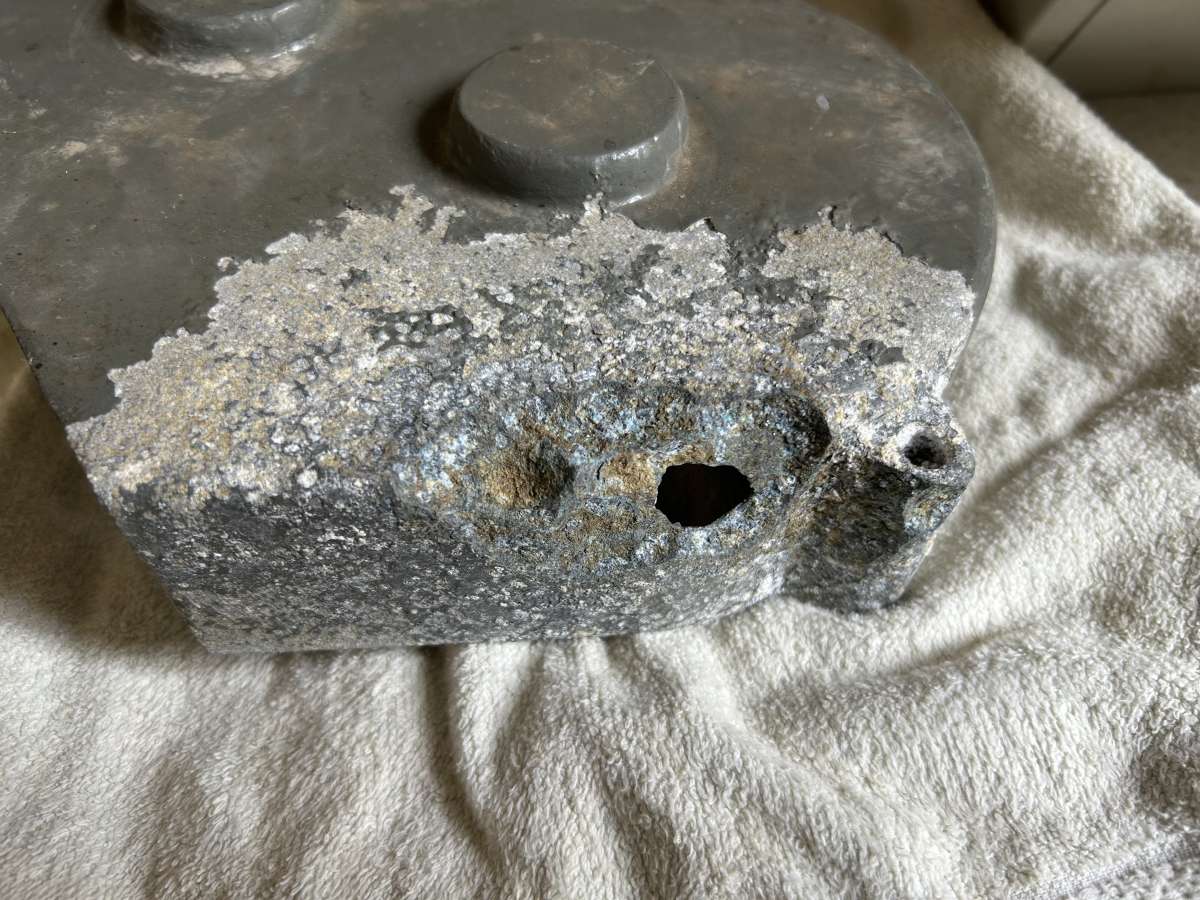Thanks to all for the input, I now have a plan…
Caustic soak for a few hours to loosen surface crust
…
The caustic soak is high risk. If the part is an Aluminium alloy, the alkali won’t stop at at the crust, and the whole lot will dissolve. And because Caustic Soda eats Aluminium faster than corrosion, it will drill new holes wherever it hits bare metal.
Supervising a soak in hope of removing the part from the chemical before deep damage is done is also risky. The caustic will drill into any cracks and crevasses, and be extremely difficult to remove from the billions of superficial microcracks all metal parts have. It will grow the cracks and fill them with weak corrosion likely to spoil a later filler and paint job.
Always important to use the right tools for the job, and chemicals aren’t suitable for this one. The rest of the list is fine, just start with brushes. Won’t take long. Most of the corrosion formed on Aluminium and Zinc Alloys is mechanically weak. For that reason an angle-grinder might be completely over the top, so take care. Whatever it is, the alloy will be much softer than a stainless steel brush, so don’t rip into it. By the by sandblasting does a much better job because it gets into the cracks without gouging as a wire brush will. All that’s needed is a sandblaster!
Just for fun, if anyone fancies the experiment, steal rubber gloves, apron and a ceramic mug from kitchen. Fill the mug half full of water. Eye protection also recommended – this nasty stuff might spit. Outside, add two or three table-spoons of Caustic Soda, stirring each in separately. The solution will get hot. Then add a lump of Aluminium scrap, stand back a little, and enjoy. After a short pause, the liquid should froth, bubble and get hotter. The speed at which heat is produced is proportional to the surface area of the metal, so don’t use Aluminium swarf. The bubbles contain Hydrogen gas that can be exploded, pop not boom, with a lit splint. The solid matter remaining is corrosion, mostly Sodium Aluminate. As the reaction creates a lot of heat, a chemist would take extra care to contain and control a large scale version of this reaction. In the event the ceramic mug boils over or cracks, cool and dilute with plenty of water. Then neutralise with Vinegar.
Dave
SillyOldDuffer.





